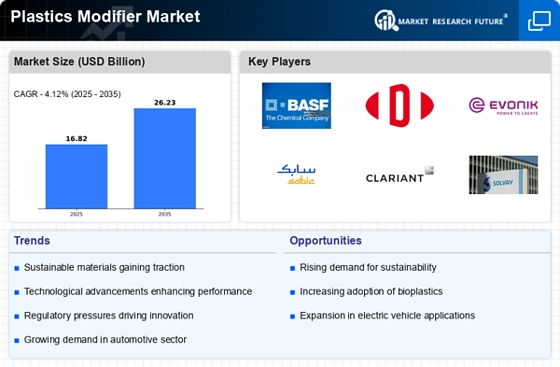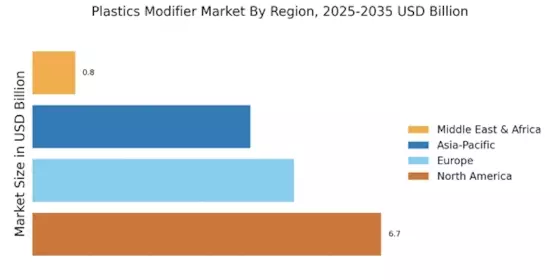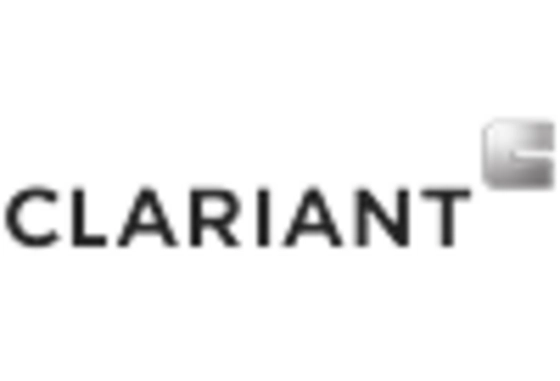Growth in Construction Activities
The Plastics Modifier Market is poised for growth due to the expansion of construction activities worldwide. The construction sector increasingly utilizes modified plastics for applications such as insulation, piping, and roofing materials. The incorporation of plastics modifiers enhances the durability and thermal performance of these materials, making them more appealing to builders and architects. Recent statistics indicate that the construction industry is expected to grow at a rate of 4.5% annually, thereby driving the demand for high-performance plastics. As urbanization accelerates, the need for innovative building materials that can withstand environmental challenges further propels the adoption of plastics modifiers in construction.
Rising Demand for Lightweight Materials
The Plastics Modifier Market is experiencing a notable increase in demand for lightweight materials across various sectors, including automotive and aerospace. Manufacturers are increasingly adopting plastics modifiers to enhance the performance characteristics of lightweight composites. This trend is driven by the need for fuel efficiency and reduced emissions, as lighter materials contribute to lower energy consumption. According to recent data, the automotive sector is projected to account for a significant share of the plastics modifier market, with a compound annual growth rate of approximately 5.2% over the next five years. As industries strive to meet stringent environmental regulations, the integration of plastics modifiers becomes essential for developing sustainable lightweight solutions.
Increasing Applications in Consumer Goods
The Plastics Modifier Market is witnessing a surge in applications within the consumer goods sector. Products such as packaging, household items, and electronics increasingly utilize modified plastics to enhance functionality and aesthetics. The demand for high-performance packaging solutions, driven by e-commerce growth, is particularly noteworthy. Recent market analysis suggests that the consumer goods segment will contribute to a substantial portion of the plastics modifier market, with an anticipated growth rate of 5.5% over the next five years. As consumer preferences shift towards durable and visually appealing products, the role of plastics modifiers becomes increasingly critical in meeting these demands.
Regulatory Support for Sustainable Practices
The Plastics Modifier Market is benefiting from regulatory support aimed at promoting sustainable practices. Governments are implementing policies that encourage the use of eco-friendly materials and the reduction of plastic waste. This regulatory environment is fostering innovation in the development of biodegradable and recyclable plastics modifiers. As a result, manufacturers are investing in research and development to create products that comply with these regulations. The market for sustainable plastics modifiers is projected to grow significantly, with an expected increase of 7% in the next few years, as companies align their strategies with environmental goals.
Technological Innovations in Polymer Science
Technological advancements in polymer science are significantly influencing the Plastics Modifier Market. Innovations such as nanotechnology and bio-based modifiers are emerging, offering enhanced properties and performance. These advancements allow for the development of plastics that are not only more durable but also environmentally friendly. The market for bio-based plastics modifiers is anticipated to grow at a rate of 6% annually, reflecting a shift towards sustainable materials. As manufacturers seek to improve product quality and reduce environmental impact, the integration of cutting-edge technologies in plastics modification becomes increasingly vital.


















Leave a Comment